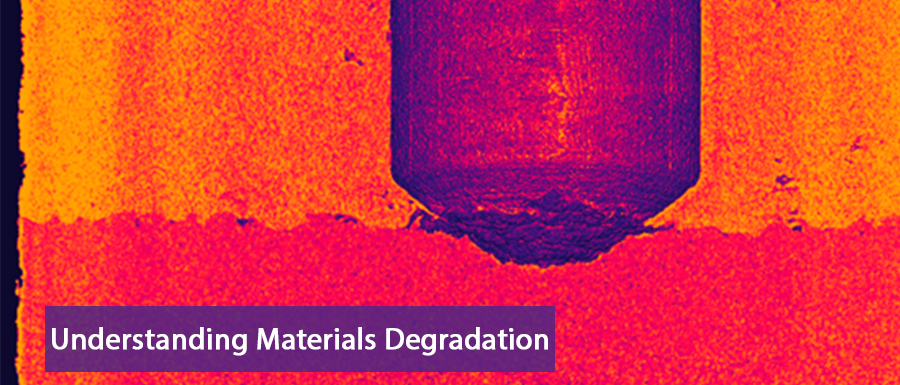Understanding materials degradation


Our researchers aim to understand the degradation process and to design more degradation resistant materials to address the costly and environmentally challenging problems of aging oil and gas pipelines, nuclear reactors, and radioactive waste disposal sites.
The degradation of materials is an increasingly costly and environmentally challenging problem, estimated to cost ~$66 billion per year in Canada alone. It is particularly important in our energy infrastructure including aging oil and gas pipelines, nuclear reactors, and radioactive waste disposal sites. Despite the magnitude of the problem, materials degradation is still not fully understood and there is a significant need for a mechanistic framework to better understand the degradation process and to design more degradation resistant materials. Our researchers are working on understanding passive oxide films and how to maintain their protective properties. We are also working with state-of-the-art instrumentation to visualize and measure damage in three dimensions. Furthermore, we are studying interfacial kinetics to predict the lifetimes of materials in industrial applications and to assess the environmental impacts of their degradation (e.g., release of radionuclides from a failed waste container). Our team recently received funding for the CFI portion of our $11.2M Innovation Fund Proposal to provide infrastructure for this work.
CAMBR Faculty
Abdolvand, Hamid
Beisinger, Mark
Ding, Zhifeng
Goncharova, Lyudmila
Klassen, Robert
Gilroy, Joe B.
Hedberg, Yolanda
Moser, Desmond
Noel, James
Ragogna, Paul
Shoesmith, David
Wren, Clara
Zhou, Wenxing


